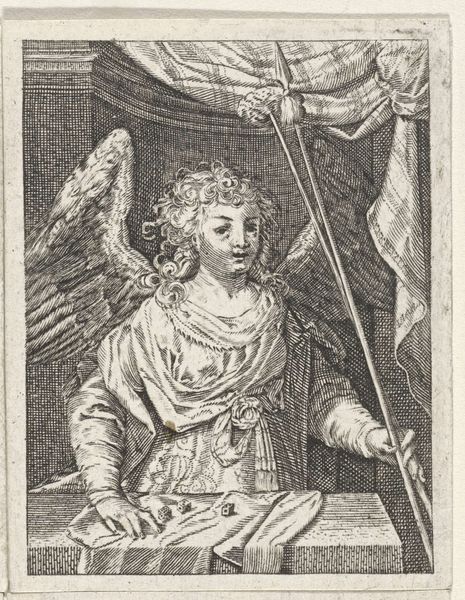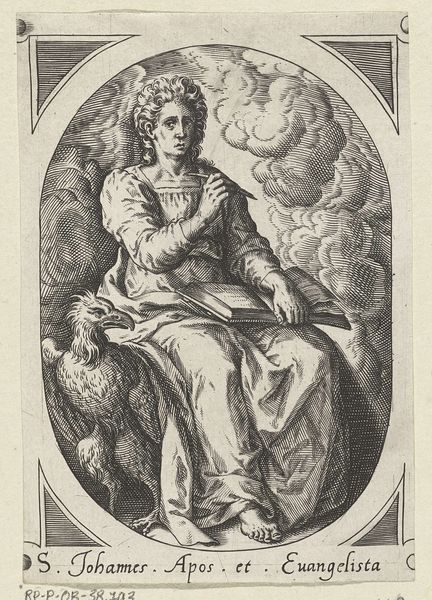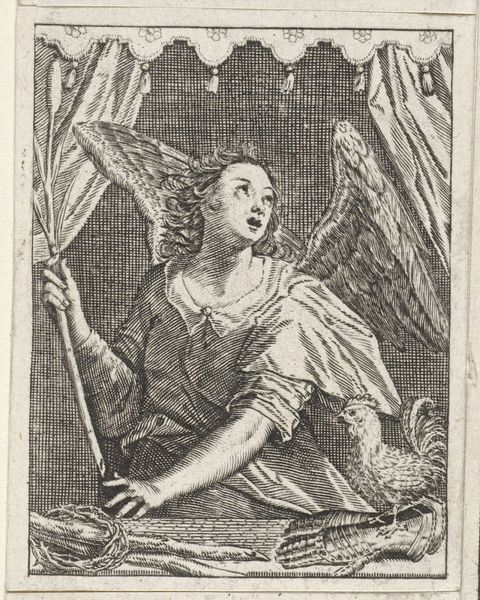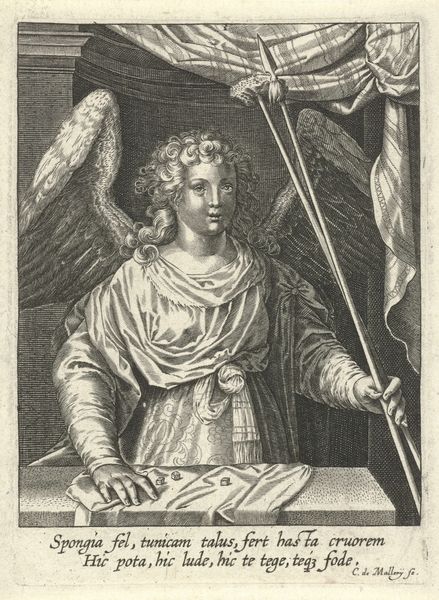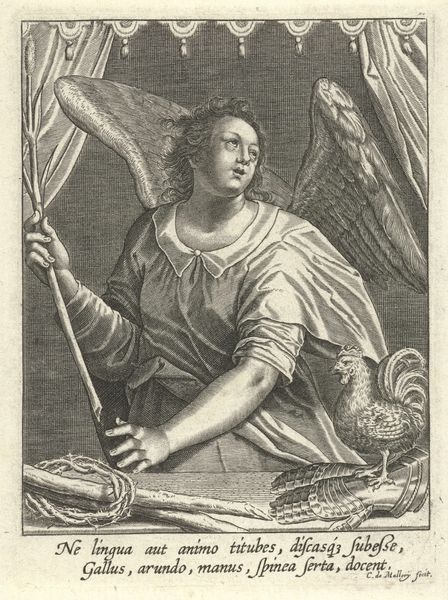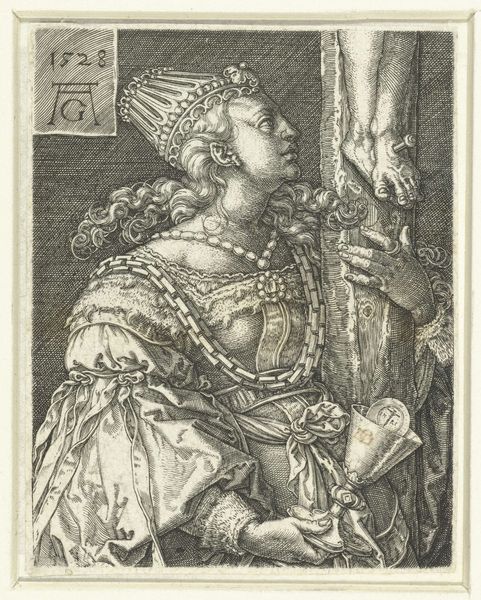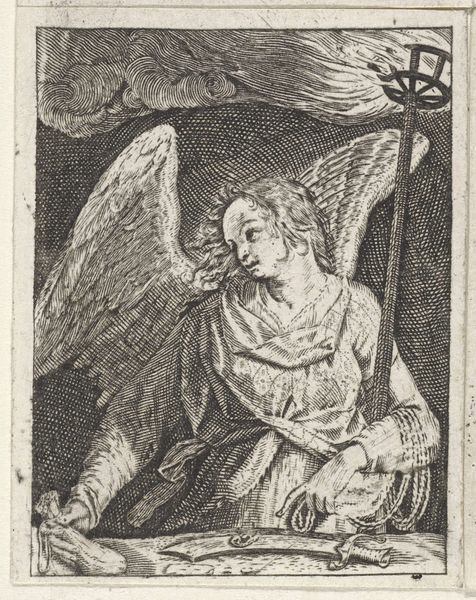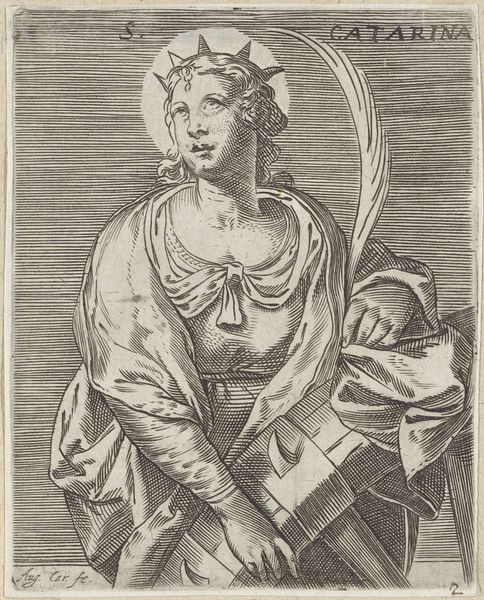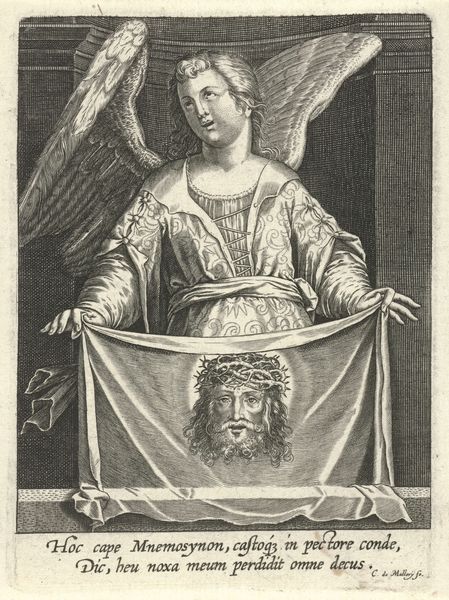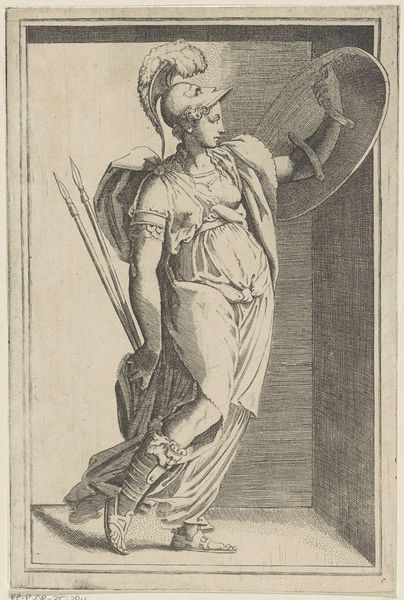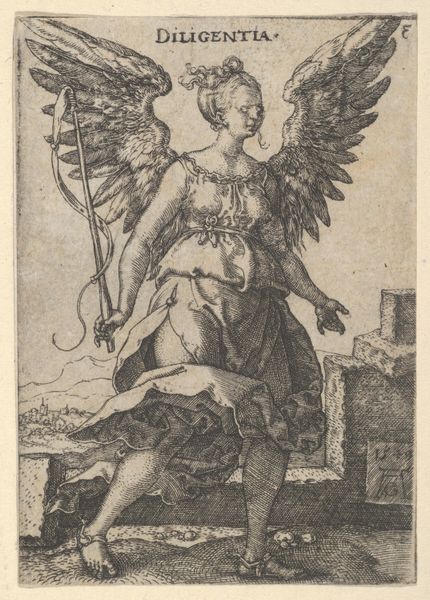
print, intaglio, engraving
#
narrative-art
# print
#
intaglio
#
mannerism
#
figuration
#
history-painting
#
engraving
Dimensions: height 69 mm, width 53 mm
Copyright: Rijks Museum: Open Domain
Editor: So, here we have "Engel met de zuil, roede en zweep," which translates to "Angel with the column, rod and whip," an engraving by Johann Sadeler I from around 1580 to 1600. It's a rather intense image. What story do you think it’s telling? Curator: The intensity stems, in part, from the socio-political and religious climate of the late 16th century. Sadeler was working during a period of immense religious upheaval and the rise of Mannerism. This image presents an angel with instruments of violence, which, considered historically, raises questions about the role of religious imagery in shaping public perception of justice and divine authority. Editor: I see what you mean. The angel almost seems conflicted. What does the column signify, and why the focus on these particular instruments? Curator: The column, in religious art of the period, is often tied to Christ's Passion, a symbol of his imprisonment and suffering. Now, consider the rod and whip. How might they function within a visual language meant to convey power, morality, and perhaps even social control at that time? Editor: So, it's not just a biblical reference; it's a statement about power and maybe a reflection on the way religious institutions exercised authority? Curator: Exactly. Artists were deeply embedded in their cultural and political landscapes. The image's presence within the Rijksmuseum, and its categorization now as art, reveals much about our current understanding of art’s relationship to the politics of imagery across centuries. It is more than just a picture; it reflects on the mechanisms of history and our place in its ongoing interpretation. Editor: This definitely gives me a different perspective on how to view art beyond its immediate visual appeal. Curator: That's the beauty of approaching art through its historical context; it helps us unpack layers of meaning and understand its continuing impact on society.
Comments
No comments
Be the first to comment and join the conversation on the ultimate creative platform.

